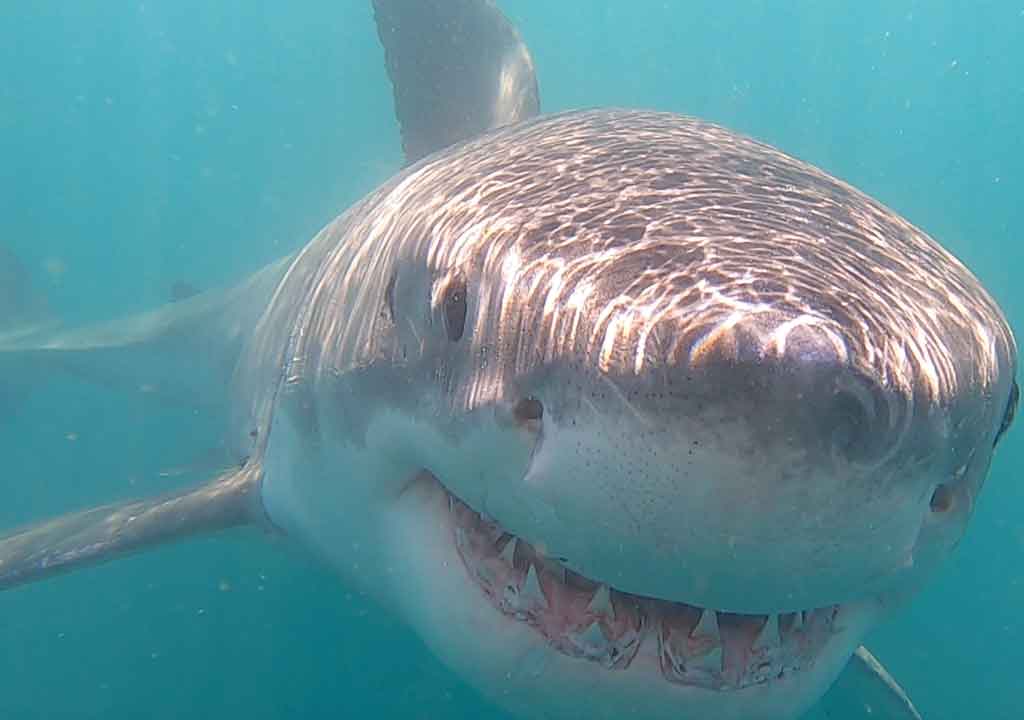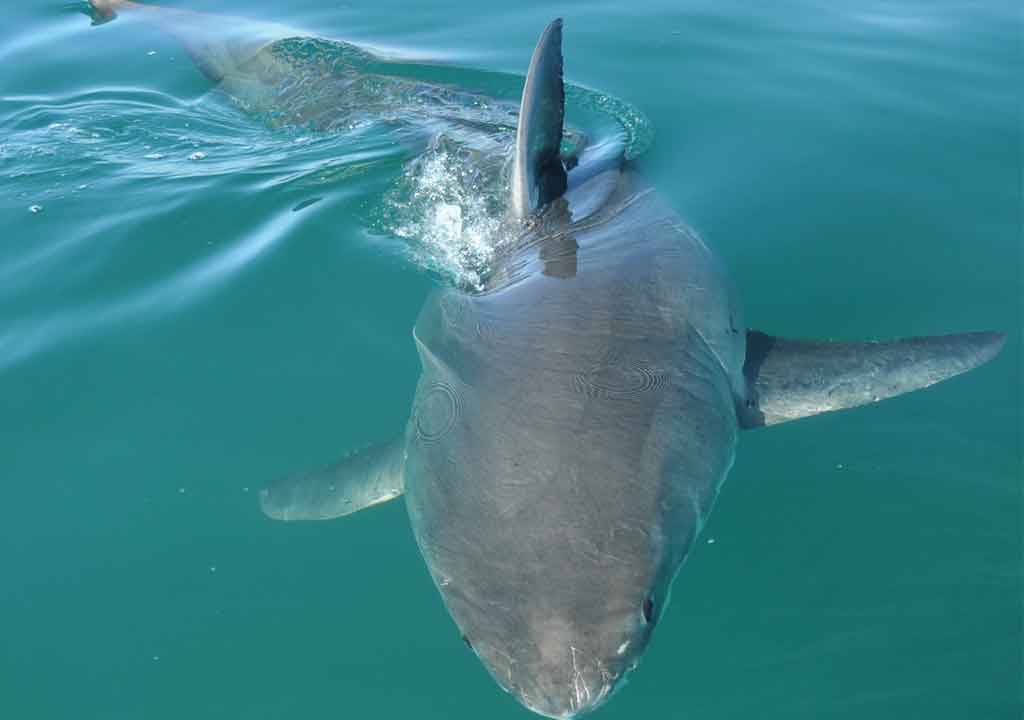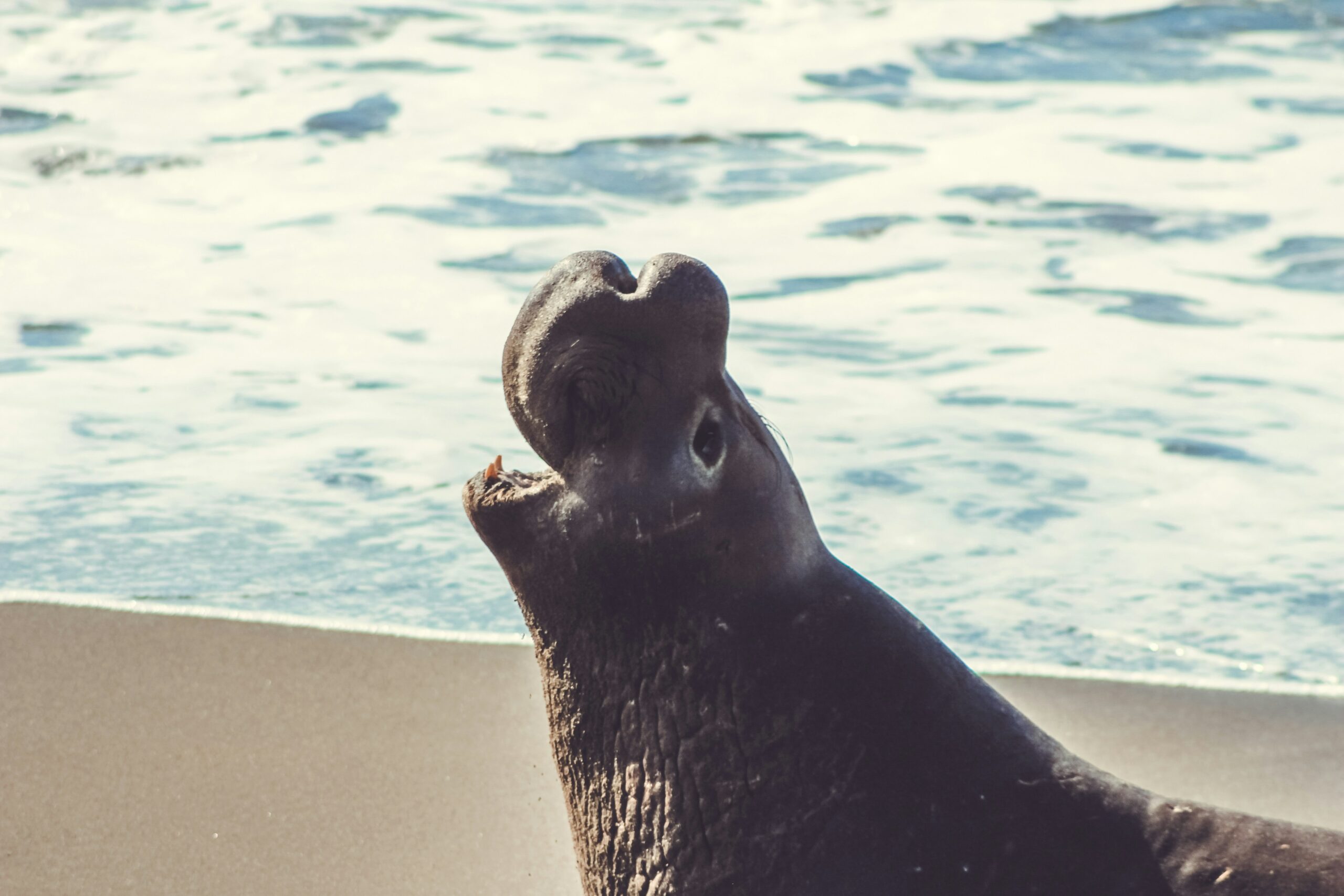News
White Sharks Have Returned to the Marin Coastline
 The Central California white shark population sits at less than 300. (Photo by Ron Elliott)
The Central California white shark population sits at less than 300. (Photo by Ron Elliott)Marine ecologist Paul Kanive, Ph.D., recalls a particular day of work in 2008 amid mundane coastal Marin conditions of dense fog and calm waters. Punctuating the otherwise forgettable day, a dorsal fin slowly broke the surface of the water, the tail following some distance behind.
“With the distance, it was hard for me to put together it was the same animal,” says Kanive of first encountering a white shark, Carcharodon carcharias, while working as a research field technician near Tomales Point. White shark adults can reach impressive lengths of more than 20 feet, sizes that readily dwarf the human observer.
Kanive, who now lives in Montana, returns to Marin County each fall along with local collaborators including white shark expert Scot Anderson and a broader team of researchers. Together they rendezvous with white sharks that make their way back to the California coast annually from an area of the Pacific Ocean dubbed the “White Shark Cafe,” located between Baja and Hawaii. By monitoring sharks in the waters around Tomales Point — as well as the Bay Area’s Farallon and Año Nuevo islands — over time, Kanive and the team have accumulated novel insights into white shark survival rates and population trends.
White sharks are identifiable by their dorsal fins, so Kanive and team have been able to monitor the return and health of individual sharks over time. “We see a lot of the same animals year after year after year, and it’s good to see old acquaintances. At the same time when you don’t see some of the old guard you start to wonder about what their fate was or if they are still around,” says Kanive.
This fall the group was relieved to reunite with the 17-foot Mr. Burns (for the 16th year in a row) near Tomales Point. White shark longevity has been documented to reach up to around 40 and 70 years old for females and males respectively, meaning that long-term observations of individuals are important for developing insights into population dynamics. The data collected by Kanive and other researchers facilitate estimation of overall population growth rate and composition, such as sex and age ratios.
Fortunately, Kanive’s work suggests stability in white shark populations around Central California, including off Marin’s coast at the moment, aided by healthy populations of pinnipeds (e.g., seals and sea lions) as well as bans on harvesting white sharks and on gillnetting in coastal waters. Importantly, white sharks are key to maintaining ecosystem balance, given they are one of the few natural controls on seal and sea lion populations. Nonetheless, the Central California white shark population sits at less than 300 individuals, meaning it still faces vulnerabilities.
“Everything has to come together for an apex predator to thrive and survive,” says Kanive. The Marin coast provides ideal nurturing conditions, including important food sources. “This coast meets the needs of white sharks. We have large populations of elephant seals, sea lions and harbor seals, and we have those large populations due to the 1972 Marine Mammal Protection Act,” he adds. “Since that time the rebound in white shark population has been pretty amazing.”

While the researchers are working closely with the Monterey Bay Aquarium and Stanford University, funding woes since the Covid-19 pandemic have meant Kanive and team are independently patching together ways to continue their work. They have turned to a GoFundMe campaign to cover basic research needs.
For Kanive, beyond funding, the GoFundMe campaign has created an unexpected opportunity to engage with folks at large, connect people with the incredible biology in their backyard, and ultimately help the researchers ensure progress on a rare, long-term white shark dataset. After all, who else is going to check in on Mr. Burns?
You can support Paul Kanive and the group’s work on the California Great White Shark Count in our local ocean waters via the GoFundMe campaign: www.gofundme.com/f/california-great-white-shark-count.







